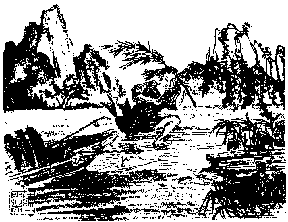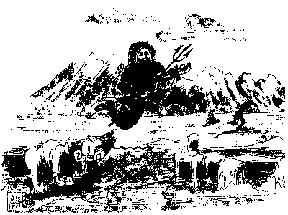In a resonance absorption experiment, the energy of incident radiation should match exactly the energy separation between the two levels of the absorption system. For example, radiation of an Na atom matches exactly the excitation energy of the other Na atom and is, therefore, effectively absorbed by it. Applying the same logic to irradiation and absorption of gamma-rays, the same electromagnetic radiation as in the case of Na atoms only of higher energy being emitted by atomic nuclei, one would come to the same resonant condition which requires that the energy separation between the two levels in the source nucleus and those in the absorber nucleus should be exactly equal. Therefore, both the source and the absorber nuclei must necessarily be identical. Provided this, one would expect effective absorption and reemission of gamma rays by identical nuclei, but this is not enough for observation of nuclear resonant fluorescence. During the process of emission of a gamma ray by a nucleus, a certain amount of excitation energy (the recoil energy – ER) is given to the nucleus to conserve momentum. That is why the energy of the emitted gamma quantum Eg is reduced by the same amount.
ER=p2/2M=Eg2/2Mc2, Eg=Eo-ER
p being the momentum given to the nucleus, equivalent to momentum of the gamma photon, and M the mass of the emitting nucleus. Similarly, whenever a gamma quantum is absorbed, the energy transferred to the nuclear excitation is reduced by ER due to the recoil energy imparted to the absorbing nucleus. For optical transitions the energy loss to recoil is much smaller than the width of the absorption line, making optical resonance fluorescence easily possible. But in the case of high energy nuclear radiation, recoil energy is much larger than the line width which impedes nuclear resonant fluorescence.
In 1958, R.L. Mössbauer made the important discovery that when the emitting and absorbing nuclei are bound in a solid, a certain fraction of gamma rays are emitted and absorbed with negligible energy loss due to recoil. This could be understood in the following way: the nucleus can behave as if it is rigidly bound to the solid such that the recoil is taken up by the entire solid. In this case, M in the recoil energy expression represents the mass of the entire solid, making ER negligible. When this happens in both the source and absorber, the condition for resonant absorption of gamma rays is satisfied.


A boy jumping from a boat on the water would fail to land on the shore because of an energy deficiency rising from the recoil of the boat. Likewise, a gamma ray emitted from a nucleus would not be absorbed by another nucleus due to a recoil reaction in emission. The same boy jumping from a boat frozen in ice can easily land on the shore, because no recoil reaction takes place. Likewise, a recoil-free emission and absorption of a nuclear gamma ray can be observed in solids, i.e. the Mössbauer effect (Fujita 1999).
The ability to tune the energy of the source to match the energy level in the absorber lies in the center of corresponding resonant spectroscopy. In the case of nuclear resonant fluorescence, the Doppler effect can be used to change the energy of the gamma ray by moving the source relative to the absorber
E(v)=E0(1+v/c)
where v is relative velocity and c – speed of light.
The resulting nuclear gamma resonant spectroscopy – Mössbauer spectroscopy – can be used to study a variety of phenomena producing shift and splitting of nuclear energy levels.
For additional information about the Mössbauer effect, please visit the IBAME Web site, which contains extensive information on the subject: http://pecbip2.univ-lemans.fr/~moss/webibame/
In August 2005, Prof. Dr. Dr. h.c. Philipp Gütlich of the Institut für Anorganische Chemie und Analytische Chemie at Johannes Gutenberg-Universität Mainz delivered eight hours of lectures on the topic "Mössbauer Spectroscopy – Principles and Applications." The PowerPoint presentation used in his lectures contains much information about the Mössbauer effect, and is available in PDF format from his Web site: http://www.ak-guetlich.chemie.uni-mainz.de/Dateien/Moessbauer_Lectures.pdf
